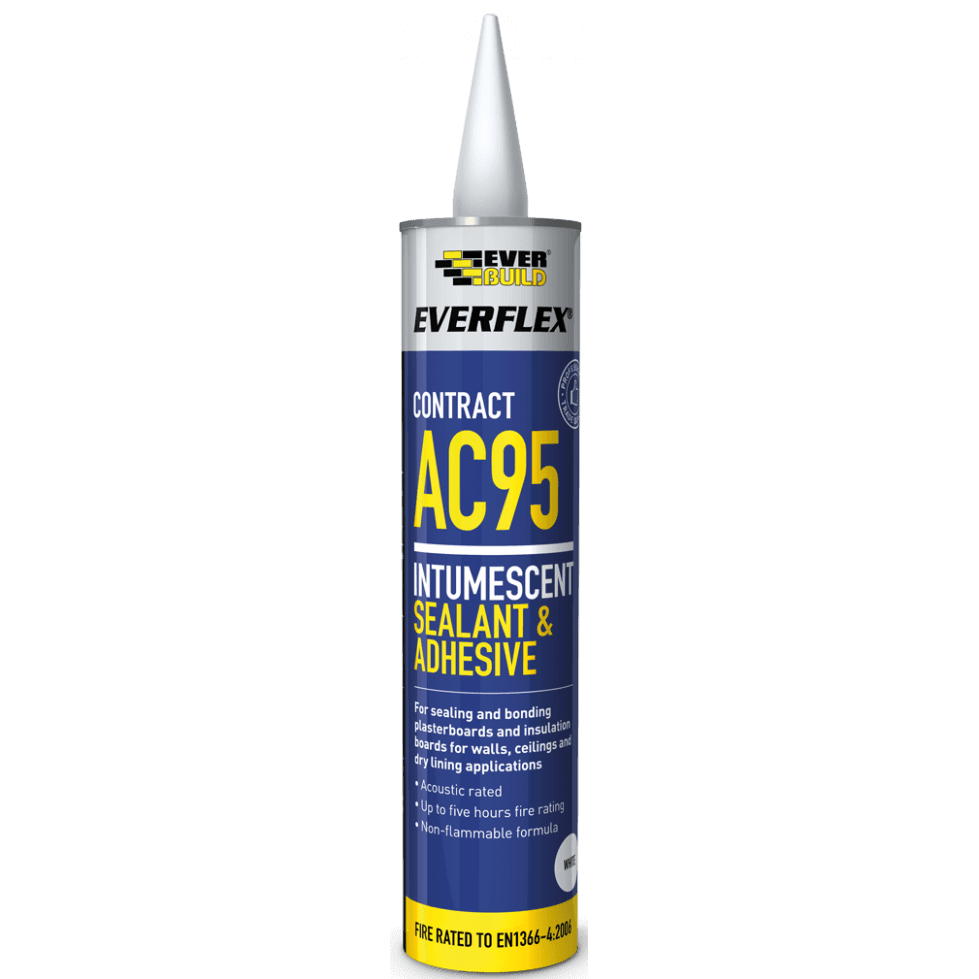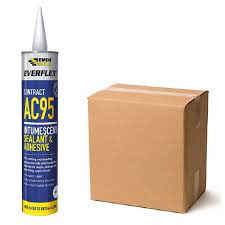Intumescent Sealant
(5 Products)Intumescent sealant is an essential material for safeguarding buildings during a fire. This remarkable product expands when exposed to heat, forming a barrier against flames, smoke and dangerous gases - all of which can be deadly in the event of an emergency. Such an ingenious solution helps provide invaluable protection when it matters most.
What Is Intumescent Sealant?
Acrylic intumescent sealants, or "fire mastics," strengthen the fire resistance of floors, walls and door frames by forming a barrier around linear gap joint seals and pipe penetrations.
Intumescent sealant is typically made of a combination of materials, including binders, fillers, and chemical compounds that are activated by heat.
When exposed to high temperatures, the sealant undergoes a chemical reaction that causes it to expand rapidly, forming a protective barrier that can prevent fire and smoke from spreading through walls, floors and doors.
The benefits of intumescent sealant are clear: it can help to contain fires and limit damage to buildings, protecting both the property in which it is applied and more crucially, the lives within it.
This type of sealant is widely used to seal joints and cavities in commercial and residential construction, as well as in industrial settings, where fire safety is a top priority.
Intumescent Sealant Applications
Heat-resistant silicone sealant is purposed for sealing and protecting the following applications:
- Linear gap joints
- Penetration seals
- Movement joints
- Windows
- Doors
- Piping
Peruse our selection of trusted adhesives and acrylic sealants products on our adhesive & sealant homepage.
Intumescent Sealant Key Features
- Outstanding bonding capabilities with conventional construction materials
- A preventative measure to protect a building envelope from fire damage
- Engineered to withstand extremely high temperatures
- Prevents the spread of hazardous gases, pollutants and other noxious substances during a fire
- Supplied in cartridges for easy application
- Outstanding bonding capabilities with a range of conventional construction materials
- Equally durable and flexible as other silicone sealants
- Can be used in conjunction with fire-resistant coatings or insulation to provide even greater protection against fire
- Majority do not require priming when applying to most construction substrates
- Certain brands offer a fire rating of up to 5 hours in certain joint configurations
Frequently Asked Intumescent Sealant Questions
Is Intumescent Sealant Required By Building Codes?
Yes, many building codes and regulations require the use of intumescent sealant in certain settings to ensure the safety of occupants and limit damage in the event of a fire.
For example, all fire doors must have intumescent fire seals. Newer door frames and doors feature a channel specifically designed to accommodate rebated seals (if they are not already supplied). For older entries, surface-mounted seals offer an ideal alternative.
How Is Intumescent Sealant Applied?
Intumescent sealant typically comes in the form of a caulk or paste that can be applied to gaps, joints, and penetrations using a caulking gun or a similar tool.
Does Intumescent Sealant Have A Shelf Life?
Intumescent sealant can typically last for several months (even years, in some cases) if stored properly and kept in a sealed container. However, it is important to check the manufacturer's recommendations for specific product shelf life and storage requirements.
How Does Intumescent Sealant Compare To Other Fire Protection Products?
Intumescent sealant is just one component of a comprehensive fire protection system, which may also include fire-resistant coatings, insulation, and other materials.
The effectiveness of these systems depends on a variety of factors, including the severity of the fire and the quality of the materials used.





